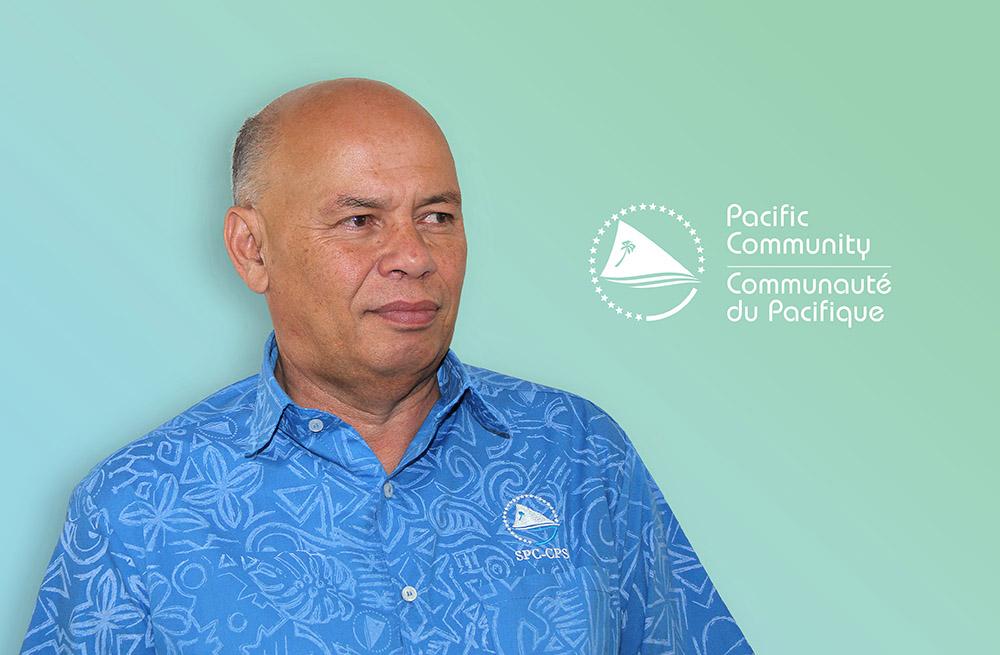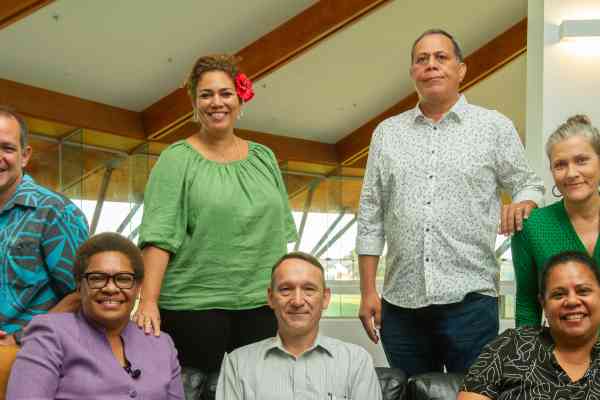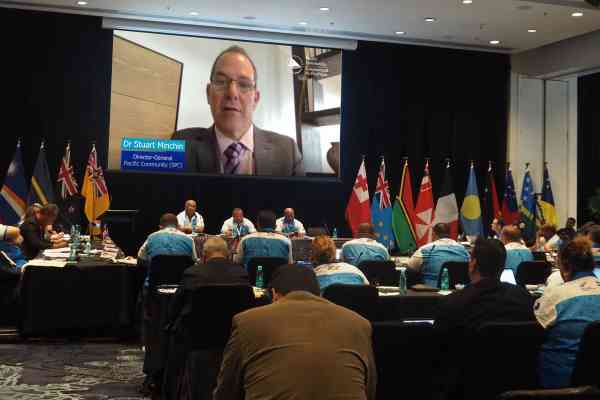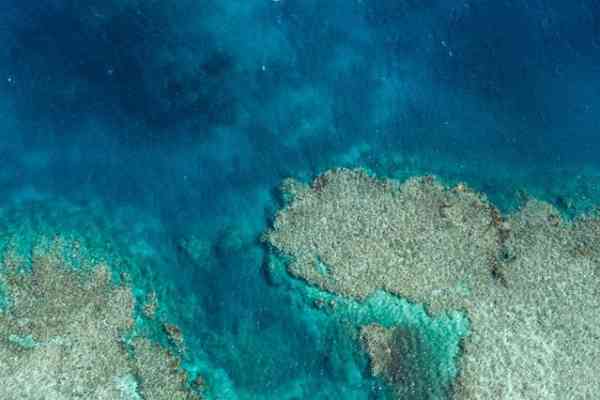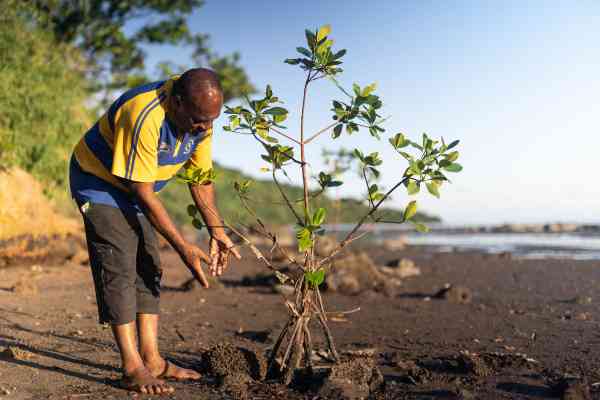The Pacific Community (SPC) turns 70 year this year. It is a significant milestone. The organisation will mark the auspicious occasion with a Gala Dinner on Friday, 28th July at the end of the annual Committee of Representatives of Governments and Administrations (CRGA) and the Tenth Conference of the Pacific Community.
SPC is an integral part of the development of Pacific nations.
My mother was a beneficiary of SPC training in the 1960s as a Home Economics teacher from Niue. I am sure many others in the region will know someone who has benefited from the work of SPC.
Established by the Treaty of Canberra in 1947 by Australia, NZ, France, The Netherlands, UK and USA, SPC has been providing scientific and technical support to Pacific island members in support of their development aspirations. The 23rd South Pacific Conference held in Saipan in 1983 gave all Pacific Island Countries and Territories full and equal membership and ownership of SPC. This marked a milestone for SPC as the first Pacific inter-governmental organisation to put regionalism into practice.
Here are some selected highlights;
The Secretariat of the Pacific Regional Environment Programme (SPREP) began life in the 1970s as a joint initiative of SPC, SPEC, ESCAP and UNEP. SPREP left SPC in 1992 becoming an independent inter-governmental organisation on 6 June 1993. SPREP continues to be an important partner for SPC in climate change and environmental sustainability.
In 1959, the 4th SPC Conference in Rabaul (PNG) approved the establishment of the South Pacific Games. The first South Pacific Games was held in Suva in 1963 with 650 competitors from 13 territories. It’s now called the Pacific Games and a well-known Pacific institution.
The 8th SPC Conference in Noumea in 1968 approved the creation of the South Pacific Arts Festival and the first Festival was held in Suva in in 1972. The Arts Festival continues to be the focus for celebrating Pacific cultures. The 12th Festival of Pacific Arts (FestPac) held in Guam in 2016 attracted more than 2,500 participants from the region, including many international visitors.
In the mid-1970s, SPC epidemiologists and health officials in Nauru first described the high prevalence of diabetes in that nation. The first study was conducted in Nauru in 1975, which showed that the prevalence of diabetes was 35%. This study led to many other similar studies across the Pacific region showing very high levels of NCDs (diabetes, heart disease, gout etc). NCDs continue to be the major public health threat in all Pacific nations.
In the late 1970s, SPC fisheries scientists also began tuna tagging as an important contribution to the assessment of the tuna stock in the Pacific region. SPC conducts region-wide tuna tagging projects to collect critical information for the assessment of tuna species in the Western and Central Pacific Ocean. The specific objectives of this research are to obtain information on the growth, movements, natural mortality and fishing mortality of the tuna.
In the early 1980s, SPC fisheries experts were instrumental in the design and deployment of Fish Aggregating Devices (FADs) around the region. Artisanal FADs help improve fish catches by coastal communities to sustain food security, community livelihoods and reduce pressure on coastal marine resources. SPC remains the regional repository of knowledge of FADs in the Pacific.
SPC is widely recognised internationally as a knowledge broker having a toolbox for sustainable crop, livestock and forestry development. Over the long term, SPC agriculturalists, foresters and soil scientists has made a difference working with rural communities to help them out of “poverty”, increasing their economic standing, and enabling market access resulting in improved economies. There have been significant improvements in biosecurity – helping set standards and requirements for agricultural exports and imports, and protecting borders from harmful pests and diseases.
The Regional Germplasm Centre commenced operation in 1998 to improve food security issues. The centre was renamed the Centre for Pacific Crops and Trees (CePaCT) both to reflect the importance of tress to food and nutritional security and income generation in the Pacific. CePaCT not conserves the region’s valuable genetic diversity, but it also distributes plantlings to growers throughout the Pacific. The taro collection is the largest in the world. The Centre has proven to be a valuable resource following disasters. It contributes material and knowledge to the global seed bank network.
The region’s policy makers depend on access to timely and accurate demographic, economic and social indicators to support their work. The Pacific Community has provided support training and capacity building for members through strengthening the National Statistical Offices (NSOs) and systems for several decades. It is the only regional organisation with a dedicated statistical function supporting members with data collection, analysis and dissemination. For example, the Pacific Regional Management Information System (PRISM) is a regional web portal, connecting visitor to all Pacific Island national and territorial statistical agencies. On average, there are more than 5,000 visits to the PRISM website per month.
The Pacific Islands Applied Geoscience Commission (SOPAC) was absorbed by SPC in 2010 where it is now part of the Geoscience Division (GSD). GSD staff provides scientific and technical support to members in the provision of water and sanitation services, applied ocean, island and coastal geoscience services to support countries to govern and develop their natural resources, increase their resilience to hazards and facilitates data-based approaches to adaptation and disaster risk management support. Since early 2000, SPC Maritime Boundaries Unit has been helping members with definition of maritime boundaries and negotiations. There are approximately 49 shared or overlapping Exclusive Economic Zones (EEZs) in the Pacific with about 30% yet to be agreed. In 2016, Vanuatu and the Solomon Islands signed a Maritime Boundary Agreement after 33 years of negotiations.
The Educational Quality and Assessment Programme (EQAP), formerly the South Pacific Board for Education Assessment (SPBEA) also joined SPC in 2010. EQAP is responsible for enhancing the quality of education and assessment of educational standards in the Pacific. In 2015, EQAP completed the largest Pacific Islands Literacy and Numeracy Assessment (PILNA) in the region covering 45,000 students in 700 schools in 13 countries. Study results showed some improvements but low literacy and numeracy remains a challenge in the region.
In 2014, SPC facilitated the establishment of the Central Pacific Shipping Commission (CPSC). The CPSP is an inter-governmental agency for joint cooperation, coordination and regulation of international shipping services in Kiribati, Marshall Islands, Nauru and Tuvalu. With the goal of improving the frequency, affordability and sustainability of shipping services, CPSC regulates the provision of shipping services through a controlled competition model and licences to shipping lines servicing its member States. It is a unique platform where both governments and the private sector can work together as a special public-private partnership to address the longstanding challenges to shipping in the region particularly the high freight rates and service frequency.
The Pacific Way is the Pacific Community’s flagship television show. What began in 1995 as a trial for exchanging news stories – with just one tape circulated between TV stations in several Pacific Island nations – has evolved into a popular, half-hour programme that is distributed to some 20 TV stations around the region. Its longevity and iconic status are due to enduring partnerships with broadcasters across the region and to its many loyal viewers.
SPC has a long history of work promoting the empowerment of women and youth in the region. Over the course of 40 years, it has convened 12 triennial conferences of Pacific women aimed at monitoring progress in implementing the Pacific Platform for Action on Gender Equality and Advancement of Women and reporting on 12 critical areas of the Beijing Platform for Action. While gender inequities remain, it is worthwhile noting that SPC will continue to champion the empowerment of women in our region.
SPC recently facilitated the development of the Pacific Youth Development Framework 2014-2023 with the Pacific Youth Council and our partners. The PYDF will continue to guide our work in future. It is disappointing to note that while there are good reasons for investing in young people, funding continues to be difficult to find. The Youth@Work initiative that started in the Solomon Islands has led to over 6,000 young people finding employment through this landmark SPC project in the Solomon Islands, Vanuatu, PNG and Niue. AN additional 3,000 young people have received training in private enterprise.
The Regional Rights Resource Team (RRRT) has assisted member states to build a culture of human rights and supporting them to commit to, and observe international human rights and good governance standards. In 1998, RRRT won the UN Maurice Pate Award for ground-breaking work in the Pacific region and in 2015, RRRT was nominated for the global Human Rights Tulip Award. The Pacific region continues to struggle with human rights challenges, hence the need to strong support to the work of RRRT.
In November, 2014, SPC was honoured to host President Hollande at its headquarters for a meeting with Pacific leaders in preparation for the Paris Agreement negotiations on climate change later that year. We believe that the meeting enhanced the awareness of President Hollande and secured his support for the issues of small Pacific Island states at the Paris meeting. Pacific nations were able to secure unprecedented success in the Paris Agreement. The negative impact of climate change continues to be one of the main challenges facing our region. It is worth noting that SPC hosted the first Sea Level Rise Conference in April 1992.
Also in 2014, SPC was granted Observer status at the UN General Assembly. This is an important development because the challenges facing many small Pacific island states have their origins at the global level.
Looking ahead, SPC has an important place in the region most especially as the provider of scientific and technical support to member states. While the development space is getting increasingly crowded and resources are becoming increasingly scarce, SPC is currently revising its priorities so that it focuses on areas of work within its competencies, where it can add the most value and where it expects to make the most impact. With good leadership, careful stewardship, member support and a sustainable financing regime, it will provide a valuable service to its members for at least another 70 years.
